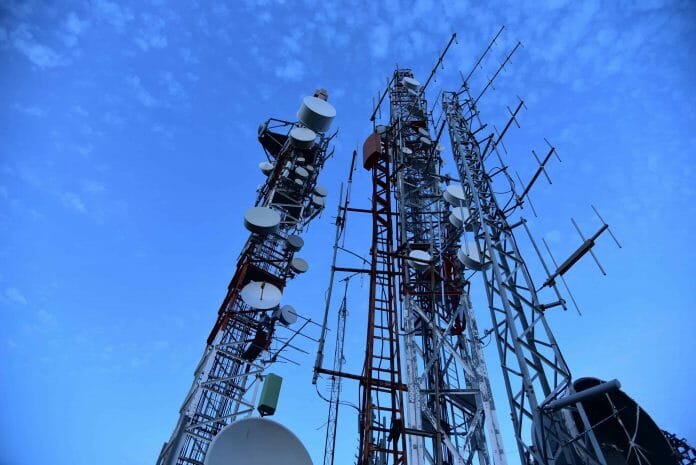Malaysia’s Telecommunications sector 4QCY23 reporting season mostly surpassed forecasts with FY23 earnings growth mainly propelled by absence of Cukai Makmur.
Kenanga Investment Bank Berhad’s (Kenanga) Sector Update today (Mac 5) said coupled with subscriber base expansion, this more than offset ARPU weaknesses well as cost pressures (from higher opex and accelerated depreciation).
Kenanga maintains their OVERWEIGHT recommendation on the sector as they are optimistic that earnings and dividends will remain intact post implementation of a 5G dual network (DN) model.
Their sector top picks are CDB (OP; TP: RM5.34) and TM (OP; TP: RM6.76).
Most players ended the year on a high note. Results from the 4QCY23 reporting season mostly exceeded expectations (4 out of 5), with the exception of MAXIS (OP; TP: RM5.30) which disappointed (due to accelerated depreciation).
Aside from AXIATA (OP; TP: RM3.10), all telcos reported core net profit growth in FY23, mainly driven by service revenue expansion and absence of Cukai Makmur.
In particular, for TM’s case, its earnings received a major boost from recognition of tax credits. On the flip side, all telcos were weighed by cost pressures that resulted in compressed or flattish EBIT margin. This mainly emanated from accelerated depreciation (for the local players) and heightened opex.
In the case of AXIATA, depreciation costs surged in line with Link Net’s aggressive expansion of home passes.
Subscriber expansion lifted topline. FY23 service revenue growth (0.3%-4.2%) for the domestic operators was mainly propelled by subscriber base expansion across the board.
Fixed and mobile operators ended the year with an enlarged subscriber base in 4QCY23, except for Celcom (4QCY23: -1% YoY). The latter was attributed to a clean-up of its prepaid base in 4QCY23 that led to the removal of non-revenue generating subscribers.
Nevertheless, for the broader industry, total subscribers for the three major mobile operators expanded by a healthy 4% YoY to 32.9m in 4QCY23. This was mainly led by MAXIS’ subscriber net adds of 442k for prepaid and 361k for postpaid.
In particular, the latter’s expansion was attributed to the introduction of postpaid plans with lower entry price points (starting from RM30 per month).
Rational competition in fixed retail broadband. Meanwhile, fixed player Unifi concluded the year with healthy YoY net adds of 137k in 4QCY23.
Notably, in spite of Unifi’s repricing exercise in Oct 2023, sequential net adds were steady at 19k in 4QCY23 (3QFY23: 19k, 2QFY23: 38k).
Therefore, this implies that competition between the fixed players remain rational despite the blanket repricing exercise for retail broadband in 4QCY23. To recap, this was to correspond with lower wholesale broadband prices following implementation of the Mandatory Standard on Access Pricing.
But ARPUs were weak. On the other hand, for mobile ARPUs, there was broad based YoY decline across the board (except for Celcom’s prepaid segment). Weakness in MAXIS’ 4QCY23 ARPUs were attributed to: (i) postpaid – following introduction of lower entry level plans, and (ii) prepaid – on the back of stiff competition. Whereas for CDB, its postpaid segment was weighed by lower interconnect rates, on-demand data and bulk SMS traffic.
5G may support ARPUs. In the near term, Kenanga believes that 5G monetisation opportunities are limited to the enterprise segment and high net worth retail customers. Recall that regulatory requirements inhibit telcos from imposing additional access charges for 5G services.
However, this does not stop telcos from extracting higher ARPUs from users with high spending capacity.
Hence, telcos may boost ARPUs from its new or revamped product plans via: (i) tiered speeds and caps, (ii) 5G data quotas, and (iii) fair usage policies that throttle speeds after limits are exceeded. Therefore, this may compel customers to upgrade to expensive plans that correspond to faster speeds, as well as higher thresholds for FUP caps and 5G quota.
Expect regulatory headwinds to resolve sooner than later. On the regulatory front, industry players are awaiting the announcement of the official 5G DN policy directive.
This is expected to shed light on the final equity stake for each telco in either entity A or B. To recap, the said entities will be established as part of Malaysia’s transition from the 5G Single Wholesale Network (SWN) model to DN.
Entity A will take over the existing first 5G network owned by Digital Nasional Berhad (DNB), whilst B will develop the new second 5G network.
Back in Dec 2023, the major telco players (i.e. CDB, MAXIS, TM, YTLPOWR (OP; TP: RM4.10) and U Mobile Sdn Bhd) have each entered into conditional share subscription agreements (SSA) with the Ministry of Finance and DNB.
The SSAs are targeted for completion in by April 2024, which will result in the telcos collectively owning 70% stake in DNB.
Kenanga maintains their OVERWEIGHT recommendation on the sector as they are optimistic that earnings and dividends will remain intact post implementation of 5G DN with sector top picks being CDB and TM.
Kenanga likes CDB for the following reasons:- (i) merger synergies are expected to amount to NPV of RM8b over 5 years – emanating from network (RM5.5b), IT (RM1.1b) and others (RM1.4b), (ii) robust average FCF yield of 7.9% in FY24-25 implies capacity to pay steady dividends, and (iii) leading subscriber base share of 39% and 20% in the postpaid and prepaid segments, respectively, translating to pricing power and economies of scale.
Kenanga chose TM on account of: (i) it being leveraged towards secular data growth on the back of current trends such as digital transformation, proliferation of internet of things (IoT), AI integration etc, (ii) it benefitting from JENDELA phase 2 projects via roll-out and monetization opportunities, and (iii) earnings accretion from potential development of new hyperscale data center.









